Yellowstone National Park is one of the most famous national parks in the world, dubbed the “Serengeti of North America” for its captivating landscapes, natural wonders, and abundance of wildlife roaming free in their natural habitat. Yellowstone is home to more wildlife than any of the lower 48 states with hundreds of animal species ranging from wild and majestic mammals to colorful fish life, amphibians and beautiful birds.
Ranked the most visited national park in the US, and setting new records year after year, Yellowstone National Park boasts 2.2 million acres which is over 3,000 square miles of pristine, undisturbed and protected land for visitors to reconnect with nature, recreate in the great outdoors, and experience one-of-a-kind encounters with the iconic wildlife of Yellowstone National Park. The West Entrance of the park is now open for spring but make sure to check out the park’s website for updated information when making your travel plans.
Whether you’re negotiating bison traffic jams on a road trip, hiking the trail systems through the backcountry, or considering a guided tour of Yellowstone National Park during your vacation in Big Sky, here’s our guide to the wildlife of Yellowstone and the top spots for wildlife viewing to maximize your time spent exploring one of the most amazing wildlife habitats in North America – Yellowstone National Park.
The Iconic Wildlife of Yellowstone National Park
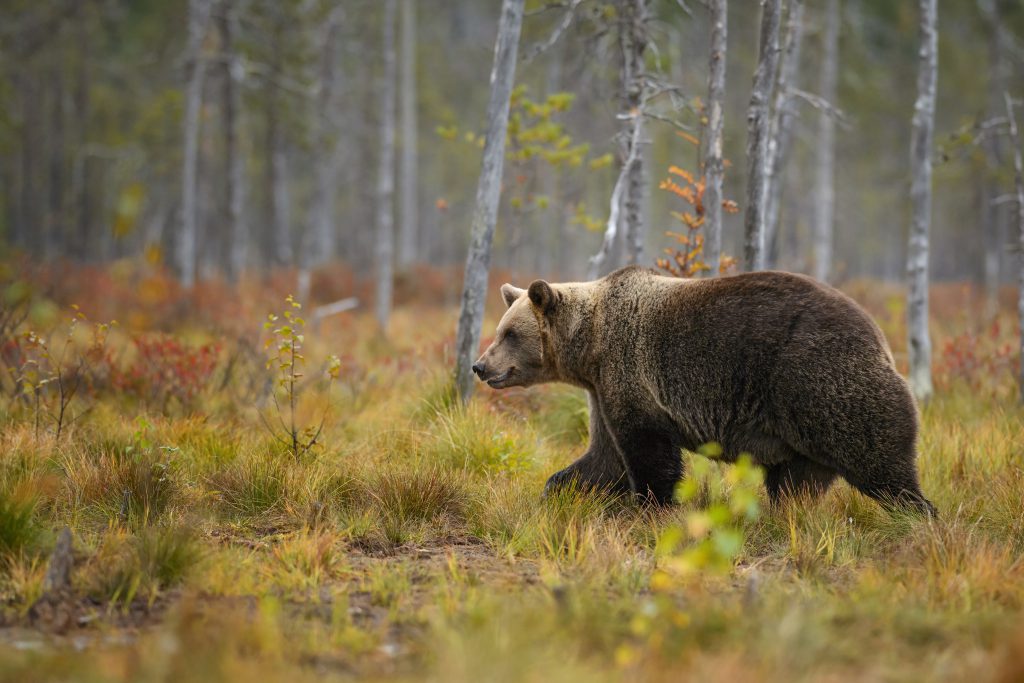
Grizzly & Black Bears
Best places to see: Hayden Valley & Lamar Valley
Yellowstone National Park is home to an estimated 720 grizzly bears and 600 black bears living in the forest, fields and mountains. The grizzly bear is Montana’s official state animal, best recognized by a large hump on its back, and larger and far more aggressive than the smaller black bear. Yellowstone bears hibernate all winter (October to April) and are best spotted in the spring when they leave their higher elevation dens to feed in the lower elevations with their newborn cubs. Always be bear aware, travel in groups, make a noise and carry bear spray on all hiking trails in Big Sky, Yellowstone and the backcountry.
Elk
Best place to see: Mammoth Hot Springs
The Greater Yellowstone Ecosystem has one of the largest elk populations in the US, with anywhere up to 20,000 elk in the park during the summer months. One of the most photographed animals in Yellowstone, elk are easily spotted roaming freely around Big Sky, on the road from Big Sky to Yellowstone, and in the vast meadows of Yellowstone National Park. Elk are best viewed (and heard!) bugling and fighting for dominance during the rut (breeding) season in the fall months.
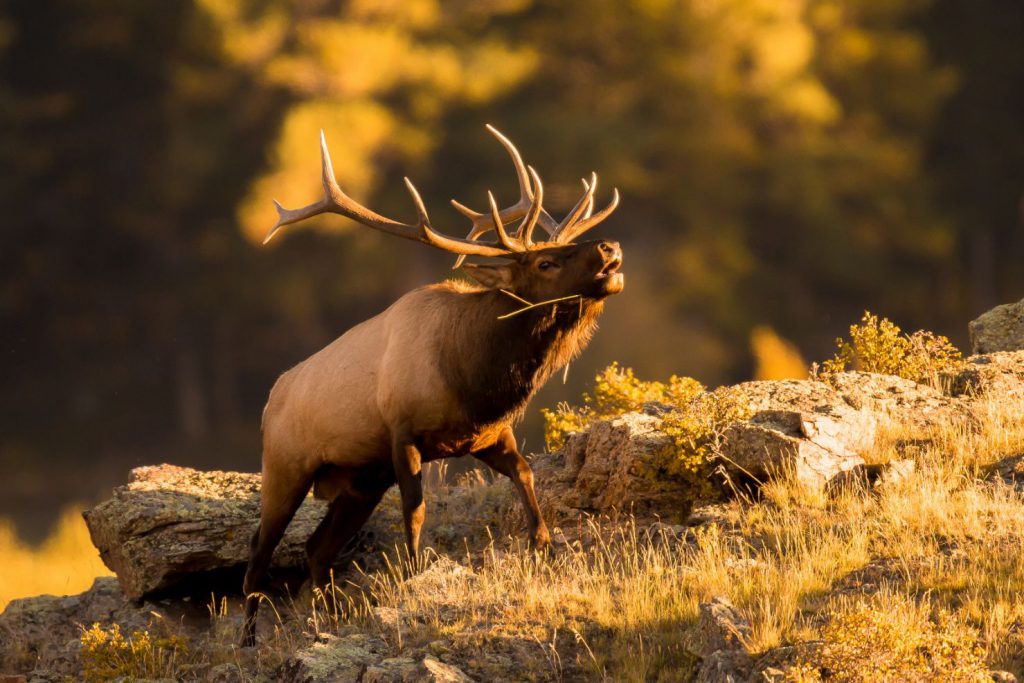
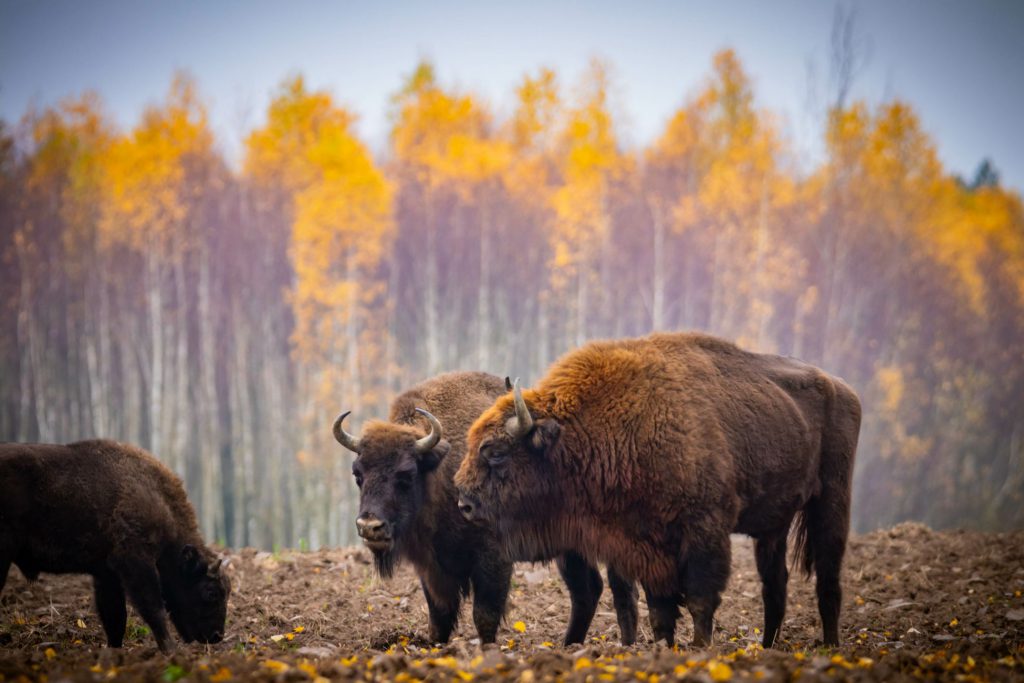
North American Bison
Best places to see: Hayden Valley & Lamar Valley
The bison, commonly referred to as the American buffalo, is North America’s largest land mammal and the National Mammal of the US. Yellowstone National Park is the only place bison have continuously lived since prehistoric times and with an estimated 5,450 bison in the Greater Yellowstone Ecosystem, it’s one of the best places to spot free ranging bison in their natural habitat. Bison are extremely unpredictable, dangerous and likely to charge if surprised. They can run 3 times faster than humans so please keep your distance and use common sense.
Moose
Best places to see: Beaver Ponds by Mammoth Hot Springs & Yellowstone Lake
The moose is another of Yellowstone’s majestic mammals, best found grazing along the lake shores, rivers, marshlands and beaver ponds during the cooler mornings and evenings. There are less than 200 moose in Yellowstone’s 2.2 million acres, and they camouflage well, so a moose sighting in Yellowstone is a unique experience! If you’re staying in Big Sky, moose are often spotted around town, on the golf courses, or munching in the backyard of your mountain cabin!
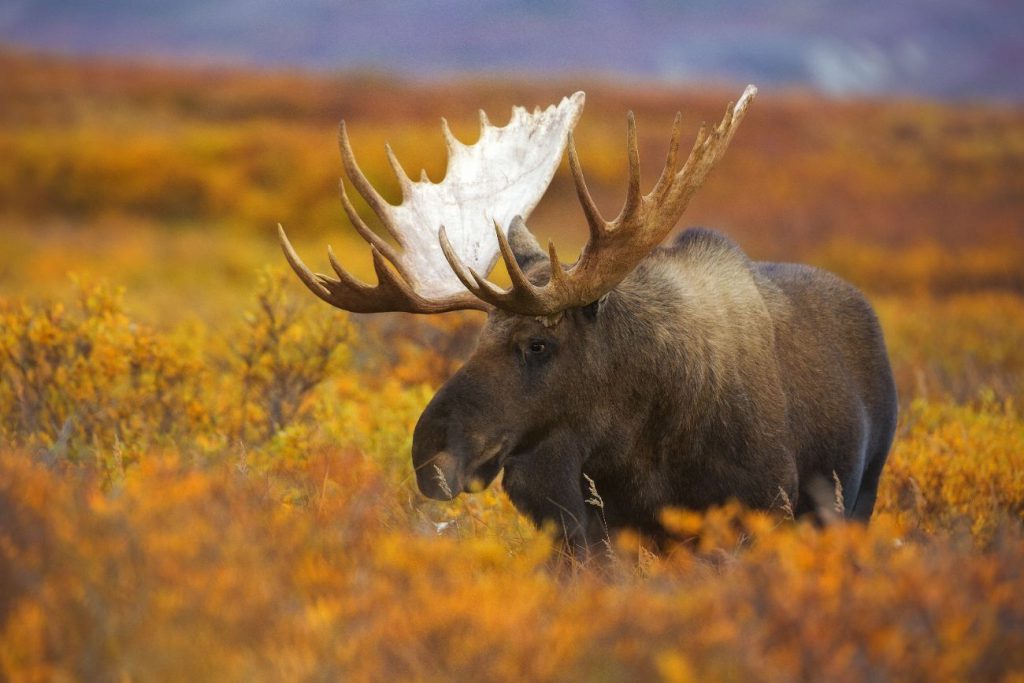
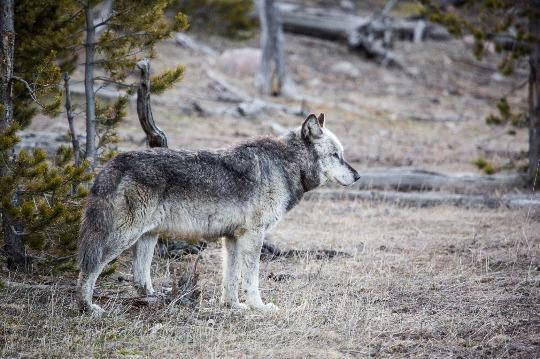
Gray Wolf
Best places to see: Lamar Valley & Hayden Valley
The gray wolf was reintroduced to Yellowstone National Park in 1995 and, today, Yellowstone is one of the best places in the world to watch wolves in the wild. With less than 95 wolves in the park, wolf sightings are rare and are easier in the snowy landscapes of Yellowstone during winter. Mid-September to mid-June is prime wolf watching season in Yellowstone National Park.
Other wildlife sightings in Yellowstone include the threatened Canada lynx, elusive mountain lions and cougars, mule deer and white-tailed deer, bighorn sheep, mountain goats in the jagged peaks, pronghorns, and rodents (beavers, porcupines, marmots, squirrels, chipmunks and gophers) scurrying through the rocky areas in the higher elevations. Remember to keep your distance from the animals and to use common sense as the park is their home.
Yellowstone National Park is also home to more than 300 bird species including the endangered peregrine falcon, red-tailed hawks, diving ospreys, the iconic Bald Eagle, and the nocturnal Great Horned Owl. These magnificent birds of prey thrive in the Greater Yellowstone Ecosystem with prime birdwatching spots along the rivers, lakes and forested areas of the park.
Where to See Wildlife in Yellowstone
Yellowstone National Park is not a drive-thru zoo with guaranteed sightings. With over 3,000 square miles of wild landscapes and diverse natural habitats, the animals in Yellowstone National Park are constantly on the move and wildlife sightings require patience and binoculars.
The absolute best way to experience the wildlife of Yellowstone National Park is on a guided tour and some of the top Yellowstone Park tours depart right from Big Sky! If you’re planning a self-guided adventure into the park, here’s our suggestions for the best places to see wildlife in Yellowstone.
Hayden Valley
Distance from West Yellowstone Entrance: 47 miles
The lush Hayden Valley lies north of Yellowstone Lake and south of the Grand Canyon of Yellowstone, between Canyon Village and Lake Village. The Hayden Valley is a renowned gathering place for herds of wild bison, elk, pronghorn antelope, bighorn sheep, coyotes and many other Yellowstone wildlife species. The Hayden Valley is also regarded as one of the best spots in Yellowstone National Park for grizzly and black bear sightings.
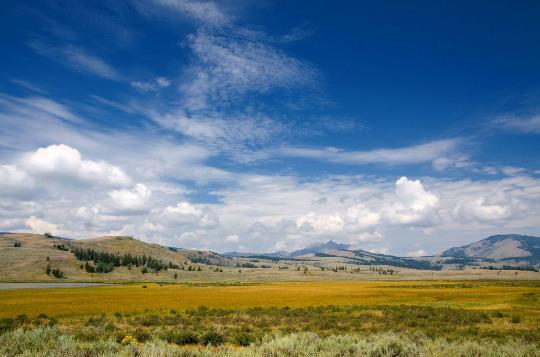
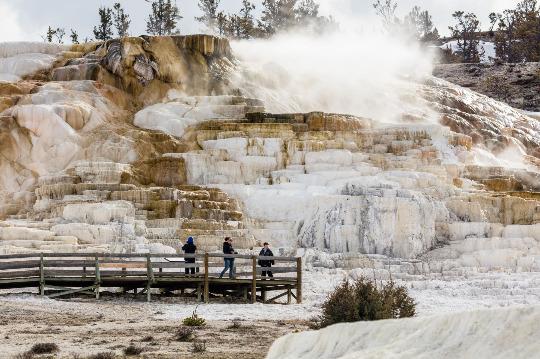
Mammoth Hot Springs
Distance from West Yellowstone Entrance: 48 miles
Mammoth Hot Springs is near the north entrance to Yellowstone National Park on Grand Loop Road and is a prime spot for elk viewing during the autumn rut. The road follows the Gardiner River Canyon with bison, pronghorn and mule deer roaming the grasslands, bighorn sheep climbing the rocky peaks and an abundance of bird life along the river.
Yellowstone Lake
Distance from West Yellowstone Entrance: 55 miles
Yellowstone Lake is the largest alpine lake in North America and a natural watering hole for a wide range of wildlife. The Fishing Bridge at the northern tip of Yellowstone Lake is a prime wildlife viewing spot for potential sightings of ospreys feeding on cutthroat trout, grizzlies, black bears and their cubs swimming in the lake waters, and moose feeding along the muddy shoreline.
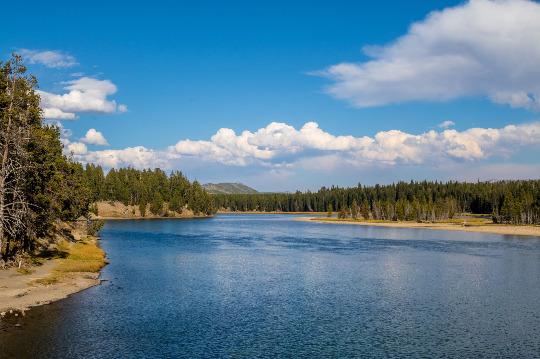
Statistics show that a wildlife collision occurs every 39 minutes in Yellowstone National Park. Drive cautiously, read the warning signs, follow the speed limit, and always keep a safe distance from wildlife. Yellowstone National Park requires visitors stay at least 25 yards away from large animals and 100 yards from bears and wolves.
While summer is peak tourist season in Yellowstone, springtime is the best season for wildlife viewing with cooler temperatures, bears and their cubs in search of food after hibernation, off-spring finding their first feet, and lush landscapes coming to life after a long winter.
Big Sky, MT is the ultimate base camp for exploring Yellowstone National Park. In Big Sky, we share our backyard with many of these majestic mammals and sightings are common on the ski slopes and hiking trails, in and around town, and even from the comfort of your Big Sky vacation rentals.
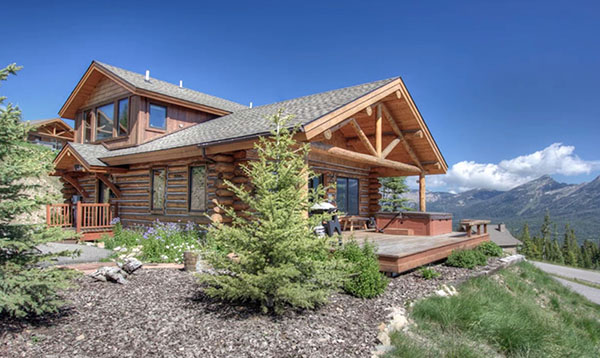
Big Sky Vacation Rentals offers a selection of over 125+ luxury vacation rentals in the best Big Sky neighborhoods with exceptional guest services to enhance your stay, and easy access to unique wildlife encounters in Yellowstone National Park.
Download our Big Sky Vacation Guide and start planning your Yellowstone wildlife experience today with Big Sky Vacation Rentals.
We Live Here. We Play Here. We Know Big Sky.

One Reply to “Yellowstone National Park Wildlife Guide”
Comments are closed.